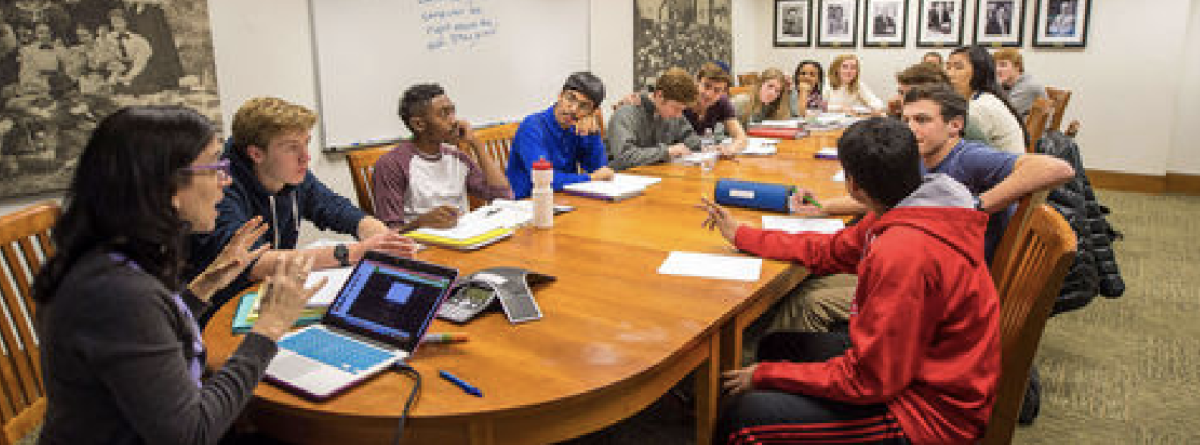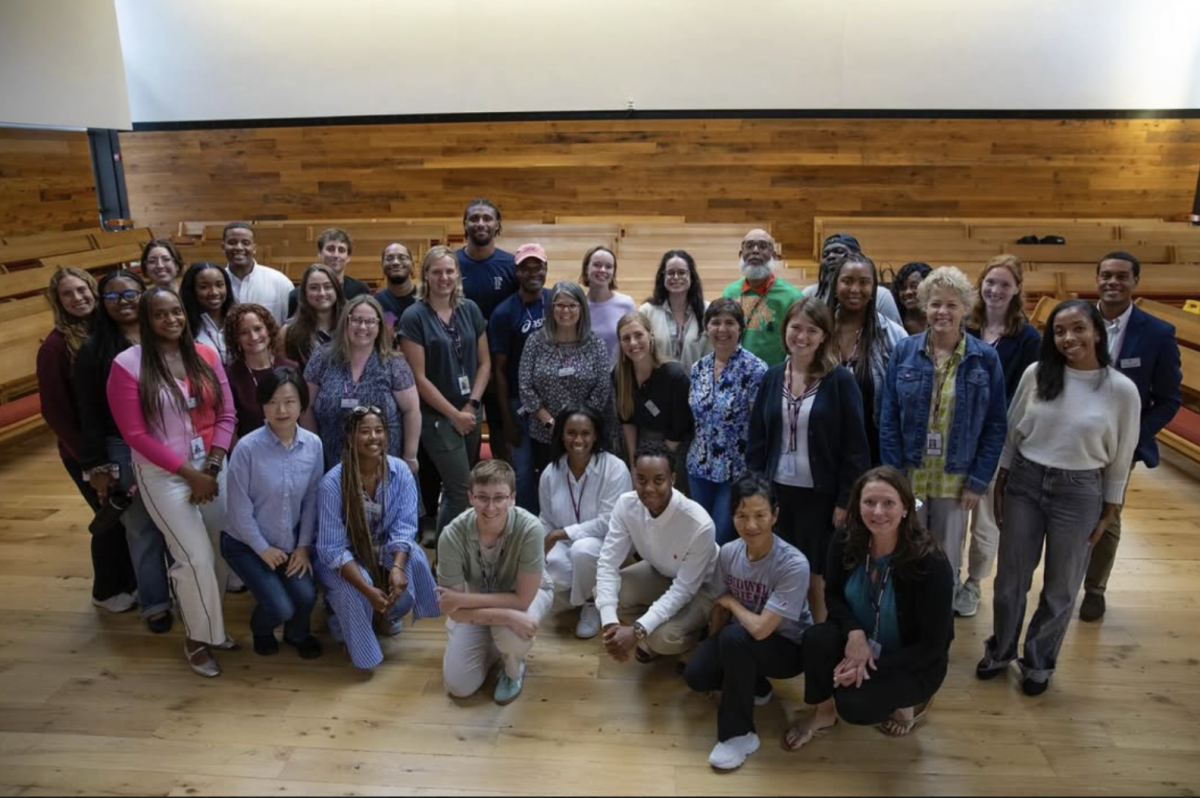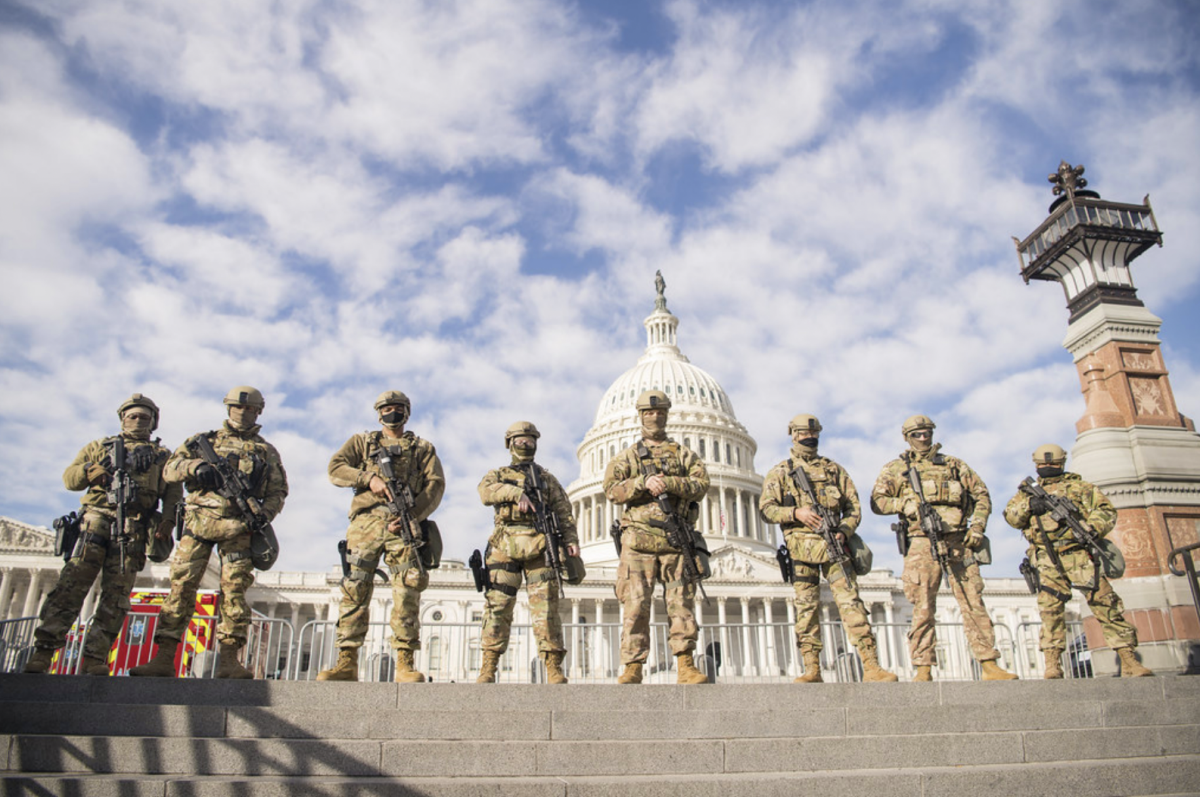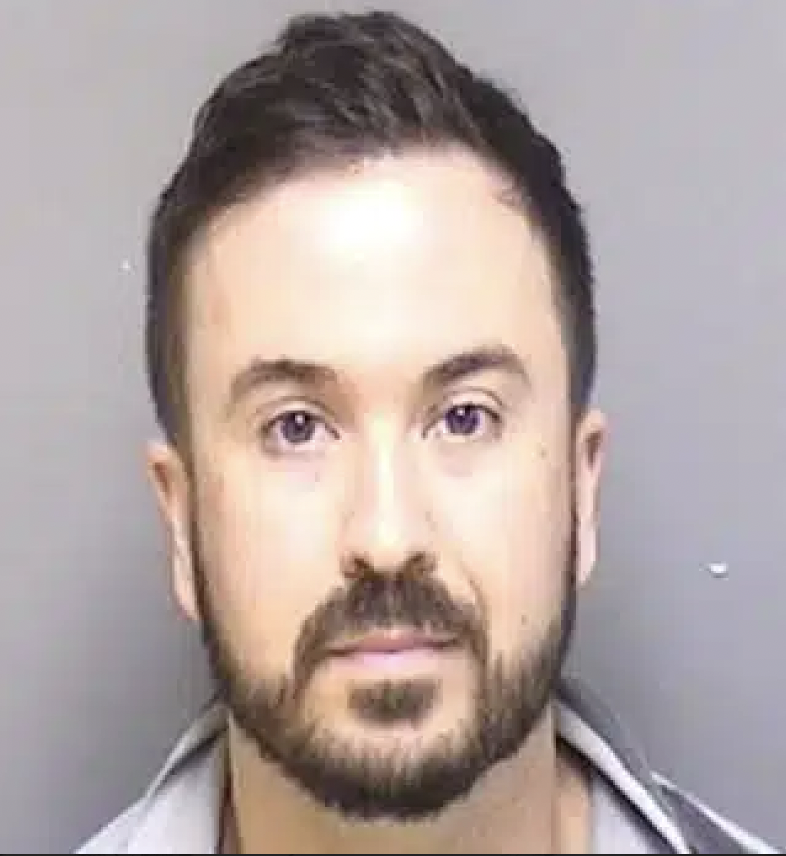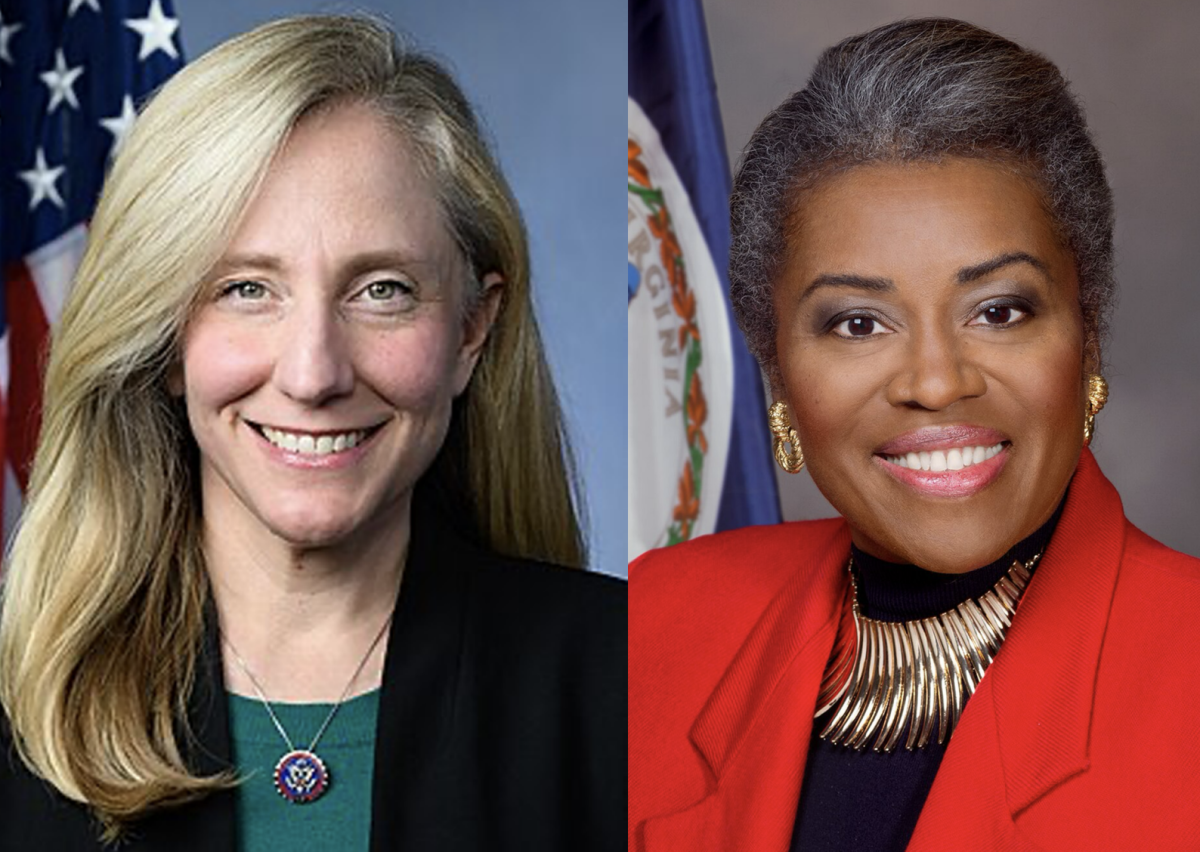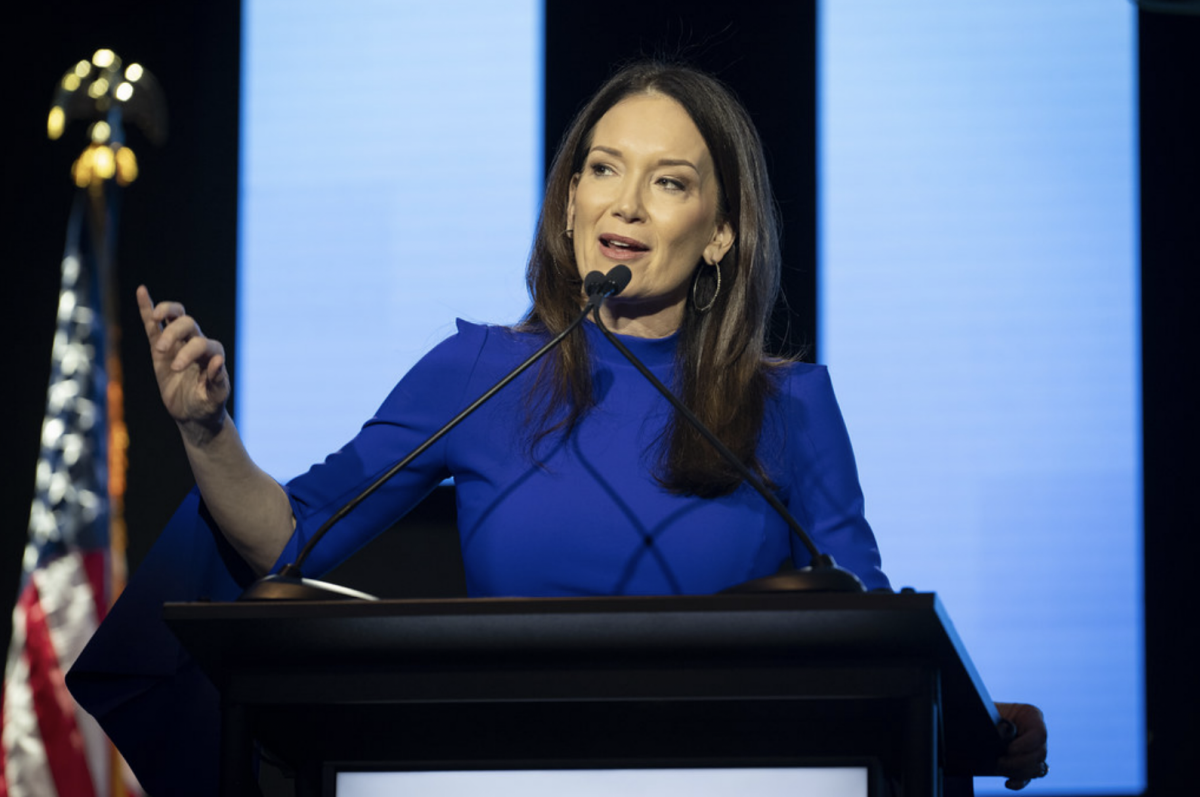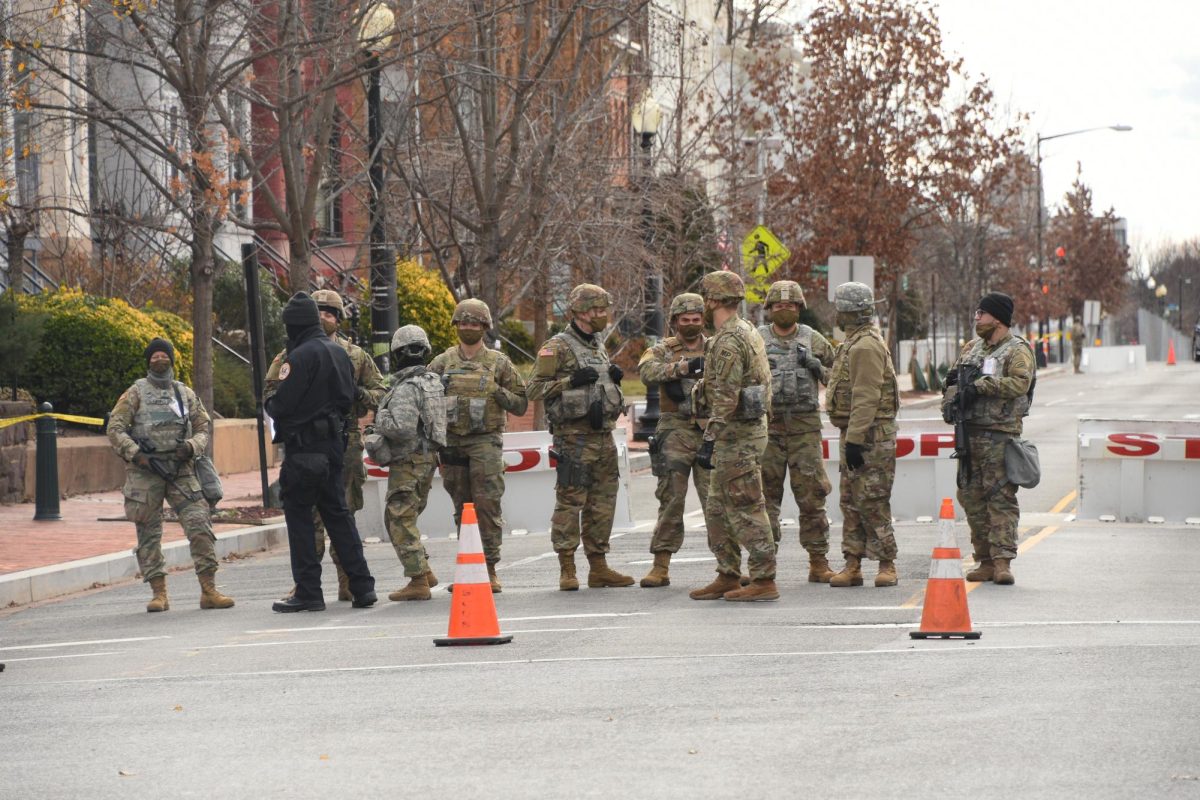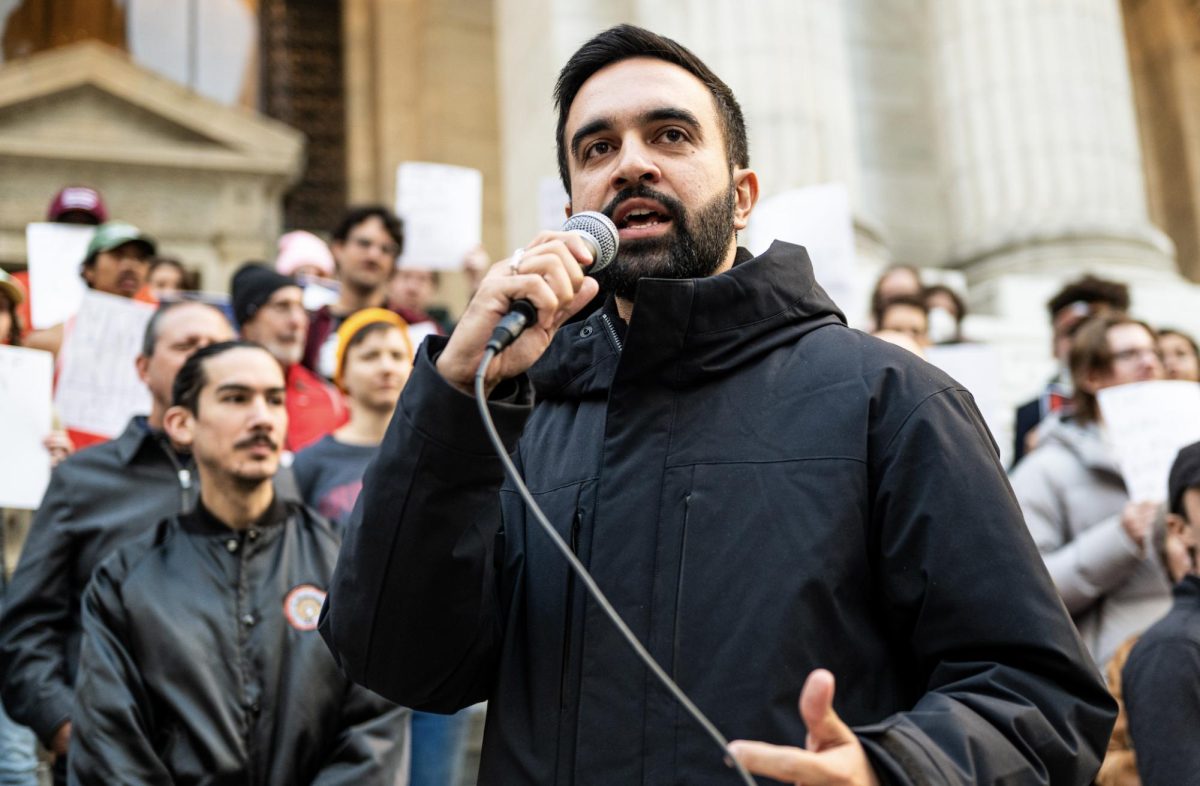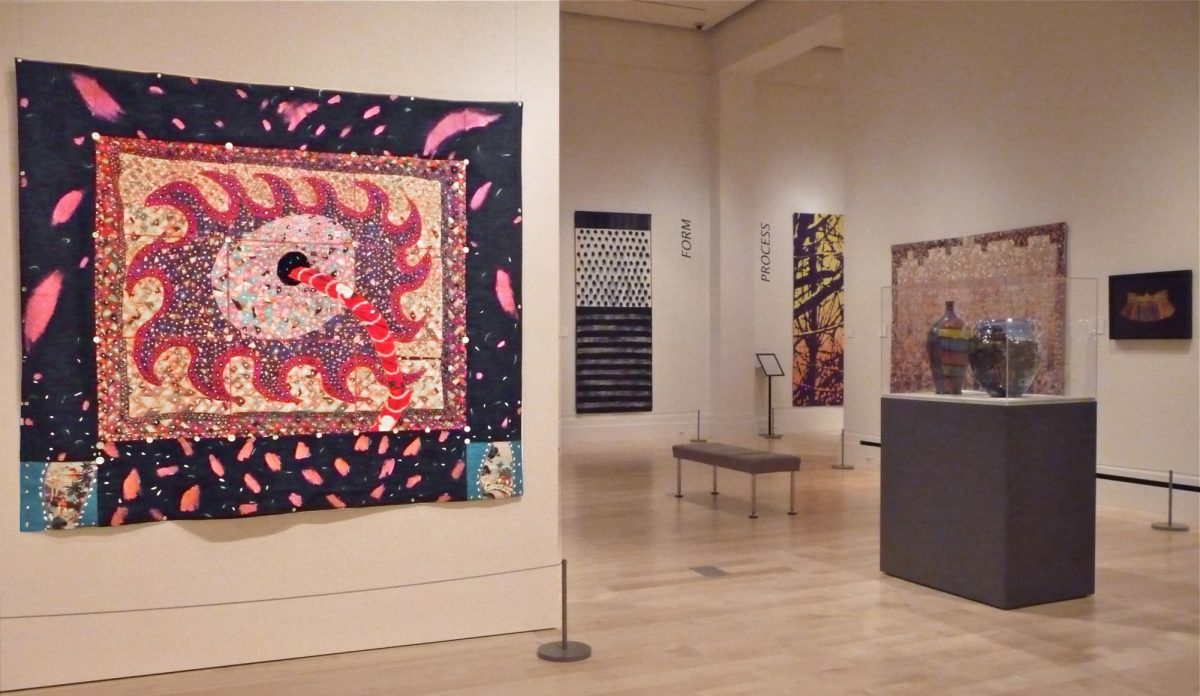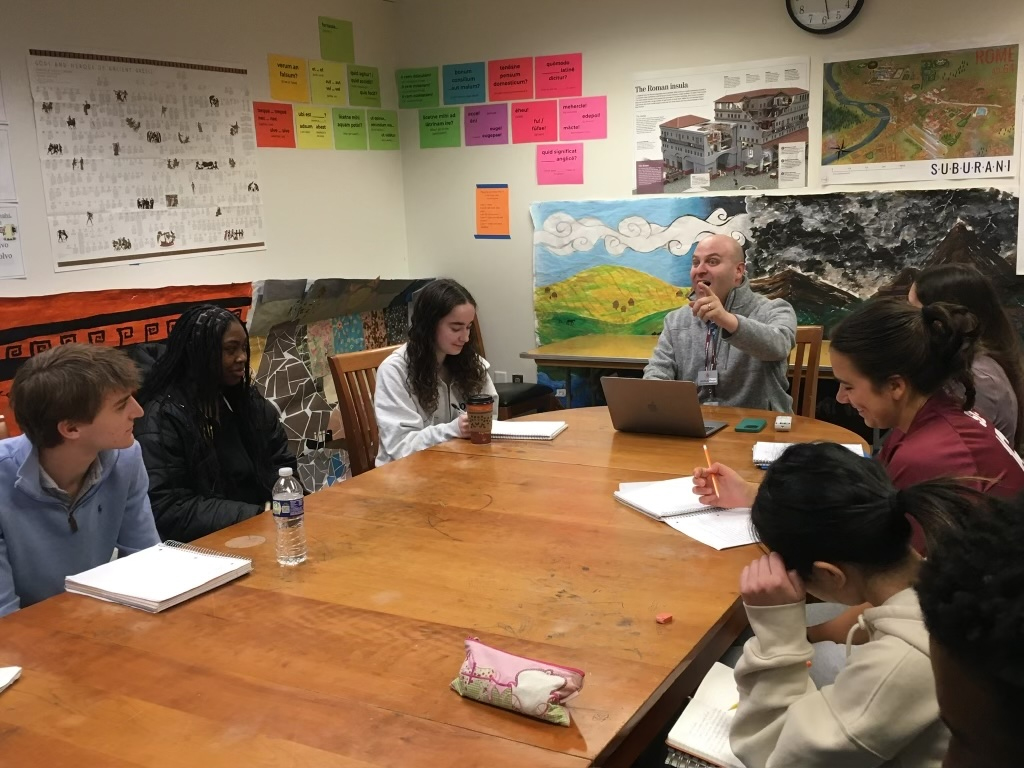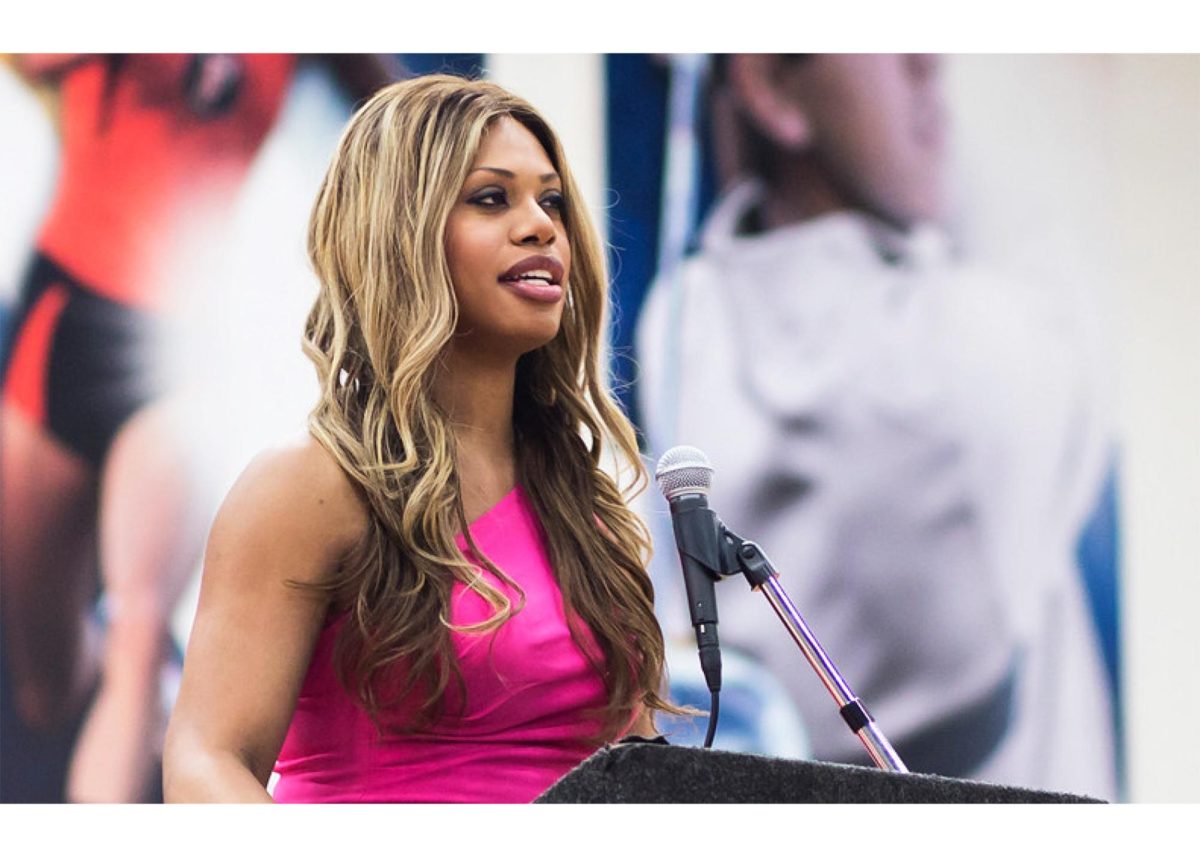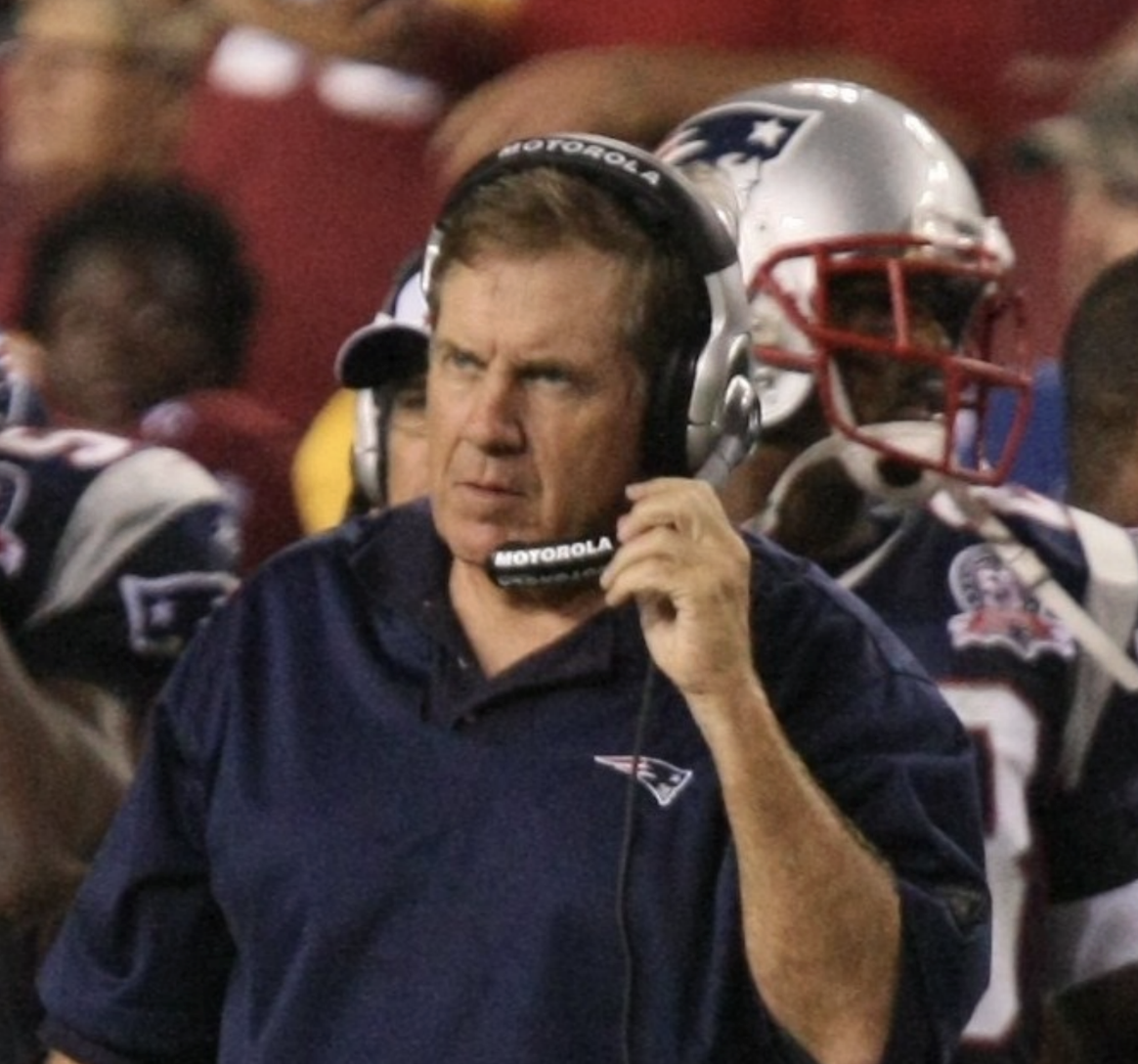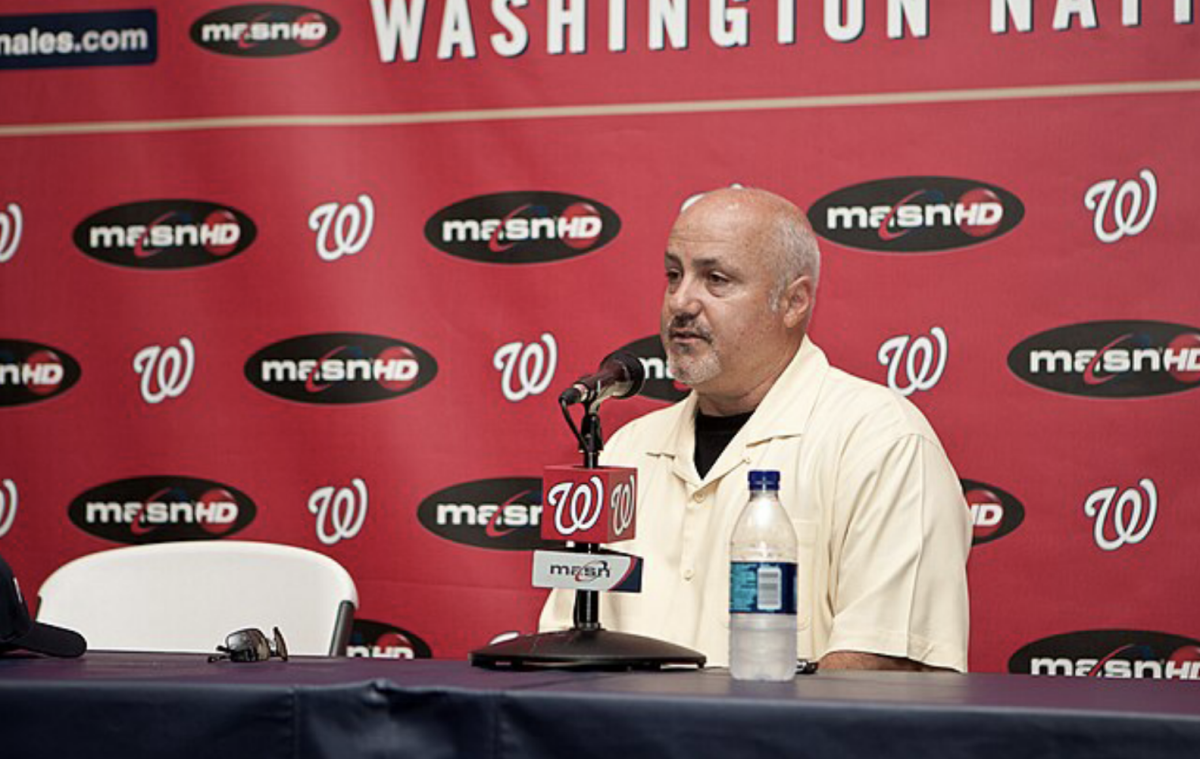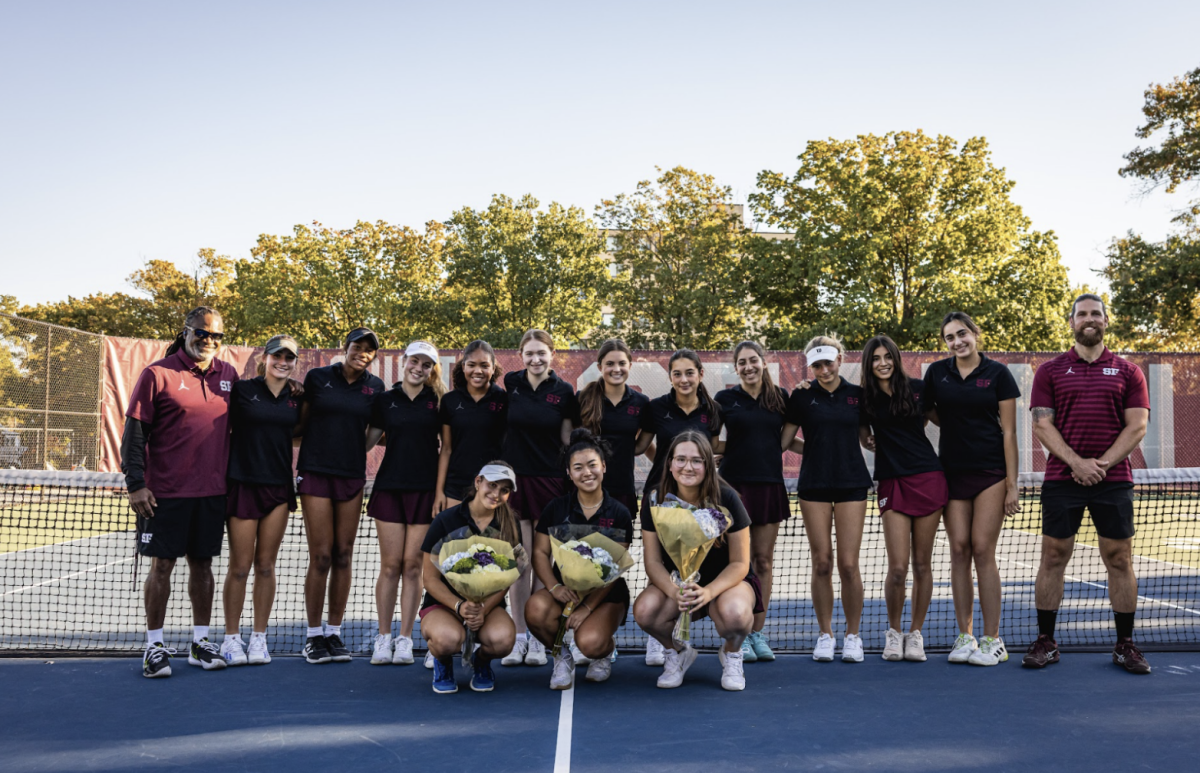Last September, Director of Equity, Justice and Community Natalie Randolph and Interdivisional School Counselor Dr. Richard Griffith introduced Bridging the Gap to the Upper School. Bridging the Gap explores the power of storytelling when discussing challenging topics. Randolph and Griffith launched the program with a Meeting for Worship presentation and a workshop offered to all students. They also periodically provide training for faculty and parents.
Bridging the Gap then hosted a second workshop at the end of February to invite new members. The session explored how to use storytelling to make difficult discussions productive. The workshop practiced listening with different levels of focus to see how it impacted conversations. Participants also practiced intentionally avoiding saying phrases like “I think” or “I believe.” Then, participants were given a series of prompts and asked to tell a personal story that could respond to the questions posed.
As the prompts or issues become more complex, the conversations get harder and more emotional. Bridging the Gap uses the analogy of an elephant and a rider to represent how emotions work during stressful situations. When emotional, the elephant becomes hard to control, which causes one to shut down or lash out.
“The diversity of our community requires the skills to have difficult conversations when our many differing experiences collide,” said Randolph, “It’s important as a community to exercise listening and speaking respectfully.”
Sidwell is full of people with different backgrounds and experiences, which also means different beliefs. Therefore, difficult discussions are especially common and need to be addressed correctly.
Junior Vivian Morris explained how storytelling “[allows] people to understand why you feel a certain way about an issue through connection to a personal experience.” Storytelling can be helpful because it gives a backstory for one’s belief, prompts deeper discussion, and fosters conversation instead of debate. To be successful in storytelling, the three important parts are to explain the challenge faced, the choice made and the outcome.
Randolph added, “Storytelling appeals to our emotional center and works to allow us to see the other person’s perspective without agreeing with their position.” Even after a successful conversation, agreement may not be reached, and that is normal. The goal is to hear the other person out and make an effort to understand where their belief came from. The motto is “soft front, hard back.” Bridging the Gap is a brave space, not a safe space, meaning there will be times of vulnerability.
Additionally, the skill of storytelling is difficult because it requires fighting the urge to get your point across immediately. Morris acknowledged, “The hardest thing about this exercise is not being able to explain your belief but instead explaining how you came to resonate with your belief.” Every belief was influenced by past or personal experiences that can be expressed with a story. Before engaging in a discussion, it’s essential to reflect on why an issue is of personal importance and how you gained the beliefs surrounding it. Explaining a belief can lead to debate, while explaining how it came to be can trigger deeper thought from everyone.
Storytelling also allows the chance to learn more about your community. Randolph stated, “Bridging the Gap is a way for people to get to know each other, which may seem simple or insignificant, however, it is much easier to disagree with and dehumanize someone that you don’t really know.” Learning more about someone through a story makes a disagreement much easier to talk through. According to Randolph, it also helps strengthen the Sidwell community as a whole. The more people who know how to bridge, the easier it becomes for the entire school community to combat stressful situations. The program challenges the fears in sharing opinions and nurtures relationships and cooperation.
Bridging the Gap continues its efforts to share the strategy across the school. Future plans may possibly include incorporating training within advisories for the next couple of months and then having an open space after Meeting for Worship for discussions. Randolph said, “We hope that this will be a slow build. Meaningful conversations take time and don’t happen in situations where there are a lot of people.” A smaller group leads to a more intimate, successful discussion. So while it might take a while to reach everyone in the community, it is necessary to take it slow to train everyone properly.
The Bridging the Gap program also plans on hosting another after-school session on the Friday before spring break. Randolph hopes, “As more people get involved…they [will] encourage a few others and those people in turn encourage a few more.” The biggest challenge is getting people to sacrifice time for the training, but once a few students experience the power of storytelling, they will hopefully recommend it to their peers, and the program will continue to expand.



